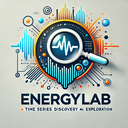I wanted to build upon some of the ideas I first shared in an earlier post, Programming with ChatGPT. The more time I spend working with ChatGPT each day, the more it reminds me of those scenes from the first Iron Man movie—Tony Stark in his high-tech garage, working alongside his virtual assistant, J.A.R.V.I.S. (Just A Rather Very Intelligent System).
In my case, I’m a semi-retired professional mechanical engineer with a deep interest in real-world systems and high-speed streaming data. For over 30 years, I’ve had a vision of creating something I call EnergyLab—a platform to observe, analyze, and share energy system behavior in real time. That idea has now taken shape as EnergyLab-TimeSeries.com, a WordPress-based site where I’m documenting this journey and building public-facing tools.
To bring that vision to life, I’ve found myself working across a range of technologies: Arduino Nano 33 IoT boards, Google Sheets, WordPress, MQTT brokers, InfluxDB, Node-RED, and more. There’s a lot to juggle—and that’s where ChatGPT, who I’ve come to call (and think of as) Jarvis, has become an integral member of Team EnergyLab.
At this point, I still communicate with Jarvis through a keyboard. But I can easily imagine a near future where voice commands accelerate the development process—where I can talk to Jarvis, get real-time code help, adjust my dashboard layouts, or launch a new sensor stream with just a sentence.
Where Things Stand Today
I’ve got dozens of sensors and devices on the EnergyLab LAN feeding data into MQTT brokers and InfluxDB. I use my growing fleet of Arduino NANOs—26 and counting—to read, create and publish MQTT data, perform energy and time-based calculations, generate new inference streams, and send structured results to Google Sheets. Those Google Sheets are then embedded live in WordPress pages using sandbox modules.
What started as a concept and a couple of NANOs has grown into a full ecosystem—with dashboards, OLED displays, custom plugins, and real-time insights. And every step of the way, I’ve been building it side by side with Jarvis.
🔧 Highlight: Key CALCULATION Engines
NANO-009: CALCULATION Engine 1
Publishes mqtt.date and mqtt.time to the MQTT broker. Built by Jarvis, this Nano uses NTP to maintain accurate time, synchronizes every hour, adjusts for daylight saving time (DST), and avoids relying on the Nano 33 IoT’s unreliable built-in RTC. These values are now essential for time-aware local displays and energy usage calculations.
NANO-021: CALCULATION Engine 5
Reads MQTT broker data, performs calculations and analysis and sends it to a Google Sheet embedded in a WordPress page (Sandbox 1). Jarvis built both the Nano program and the Google Apps Script backend that posts the data to the sheet.
NANO-022: CALCULATION Engine 6
Similar to NANO-021 but with persistent, minute-by-minute updates spanning two days. Jarvis also helped format and script the Google Sheets with auto-updating sparklines for real-time data visualization (displayed in Sandbox 2).
With more sensors, smarter logic, and tighter integrations ahead, the collaboration between Jarvis and me is just getting started. In future articles I’ll dig deeper into these NANOs and share the heavily documented programs and scripts that Jarvis has completely written for each application.
